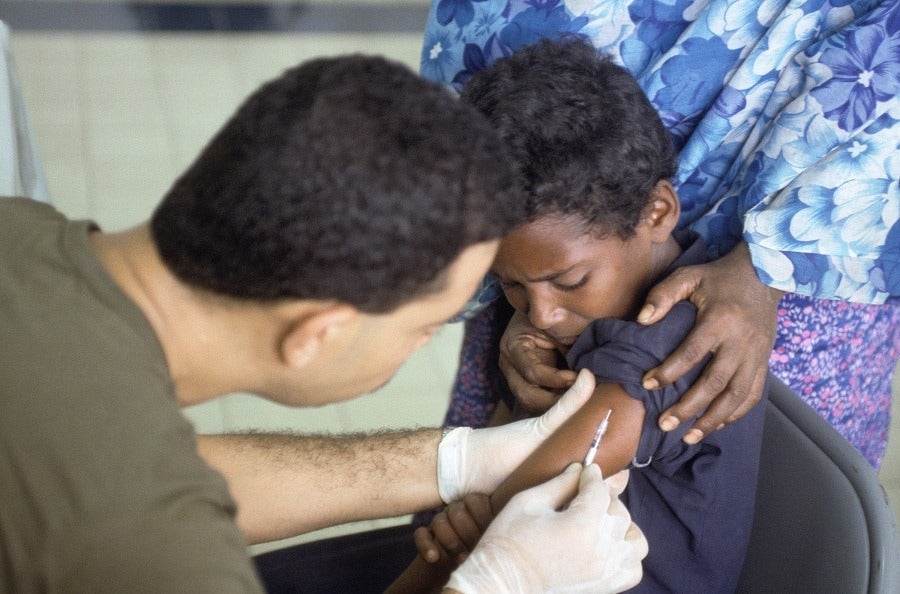
Millions of children unvaccinated against measles could cause an outbreak of the highly contagious virus across the world – including many wealthy countries – says UNICEF.
The US is facing its biggest measles outbreak in almost 20 years, and ranked at the top of the United Nations children’s charity’s list of high-income countries with the most children not to have received the vaccine.
Between 2010 and 2017, more than 2.5 million American children had not received the first dose of the vaccine.
Second on the list was France, with 608,000 children unvaccinated, followed by 527,000 children in the UK.
Henrietta Fore, executive director of UNICEF, said: “The ground for the global measles outbreaks we are witnessing today was laid years ago.
“The measles virus will always find unvaccinated children.
“If we are serious about averting the spread of this dangerous but preventable disease, we need to vaccinate every child, in rich and poor countries alike.”
Numbers behind measles outbreak

In the first three months of 2019, more than 110,000 measles cases were reported worldwide, up almost 300% from the same period last year.
Two doses of the measles vaccine are essential to protect children from the disease, with the World Health Organization (WHO) recommending a threshold of 95% immunisation coverage to achieve “herd immunity”.
James Mather, a senior pharma analyst at market intelligence firm GlobalData, said: “The number of children not receiving their first dose of measles vaccinations reported by UNICEF, particularly in high-income countries, is a public health emergency.
“From epidemiology data gathered by GlobalData, we calculate the figures reported by UNICEF translate into vaccination rates below 90%, which fall far below the WHO’s recommended threshold of 95% immunisation coverage.”
However, due to lack of access, poor health systems, complacency and, in some cases, vaccine hesitancy, the global coverage of the first dose of the measles vaccine has remained at only 85% since 2017, despite population growth.
Coverage from high-income countries for the first dose of vaccine was 94% and 91% for the second dose, according to the latest data.
Mr Marther added: “Vaccination rates below 95% pose a serious risk that protection against measles is not adequate to protect against outbreaks of the highly infectious disease.
“This has proved true with recent outbreaks in the US and Europe. The EU reported measles cases has more than tripled in first three months of 2019 compared to same period in 2018.”
In addition, global coverage levels of the second dose of the measles vaccines are even more shocking as it’s yet to be introduced to nine of the top 20 countries with the largest number of unvaccinated children in 2017.
Twenty countries in sub-Saharan Africa have not introduced the necessary second dose in the national vaccination schedule, risking over 17 million infants a year to measles during their childhood.
What is measles?
Measles is a contagious illness that can spread rapidly, resulting in life-threatening complications.
It also causes a total-body skin rash and flu-like symptoms and can infect anyone who haven’t been vaccinated.
According to the UK’s NHS, it’s most common in unvaccinated young children and is contained in the droplets that are released from the nose and mouth when an infected person coughs or sneezes.
The illness can be prevented by having the measles, mumps and rubella vaccine, which is provided in two doses.




